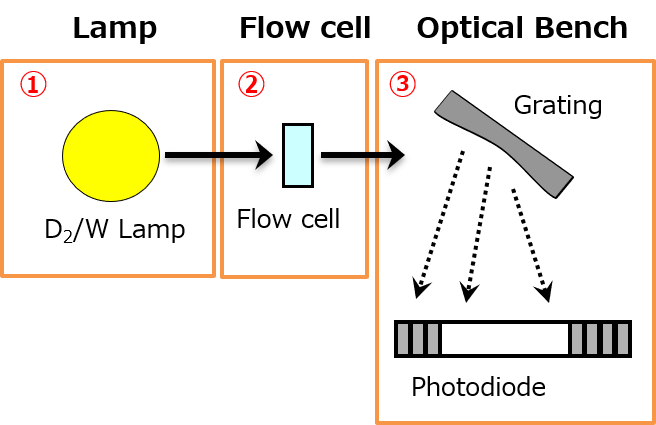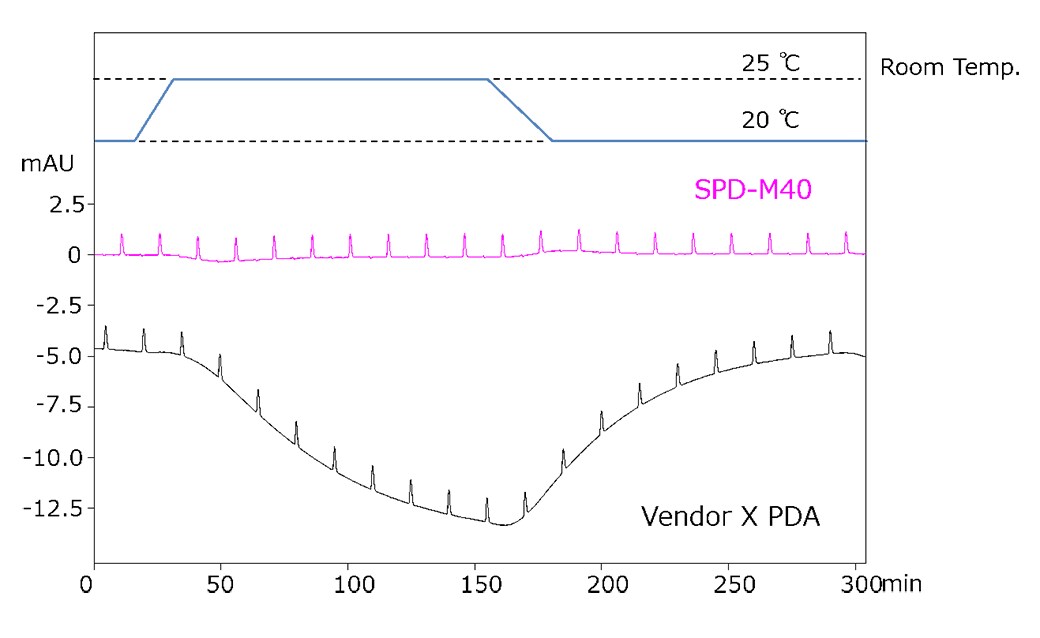Nexera Carryover
Nexera Temperature Controlled Optics
A stable baseline from an HPLC detector is essential for the generation of good data and accurate integration of the resulting chromatograms. Baseline drift caused by temperature change is a common issue experienced by analysts. It is recommended that UV/Vis and PDA detectors be allowed to warm up for at least 30 minutes before analysis but temperature fluctuations can still occur, especially if room temperature changes.
Previous generations of detectors incorporated temperature control of both the optical bench and the flow cell, but baseline drift still occurred. Much of this drift is a result of the luminosity of the of the lamp changing with temperature. This also has an impact on baseline noise and the linearity of the detector response (the ability for a detector to be used for a large range of concentrations).

Shimadzu’s Nexera LC-40 improves upon previous detector design by fully controlling the temperature of the entire optical bench: the optics, the flow cell, and the lamp compartment. Previous generations of detectors controlled the temperature of the flow cell and bench, but not the lamp. Because lamp luminosity is a function of temperature, a stable lamp leads to a stable baseline. It also extends the linear range of the detector to 2.5 AU, an increase of 25% over previous models!

Contact Shimadzu to find out more about the detector improvements of the Nexera LC-40!



